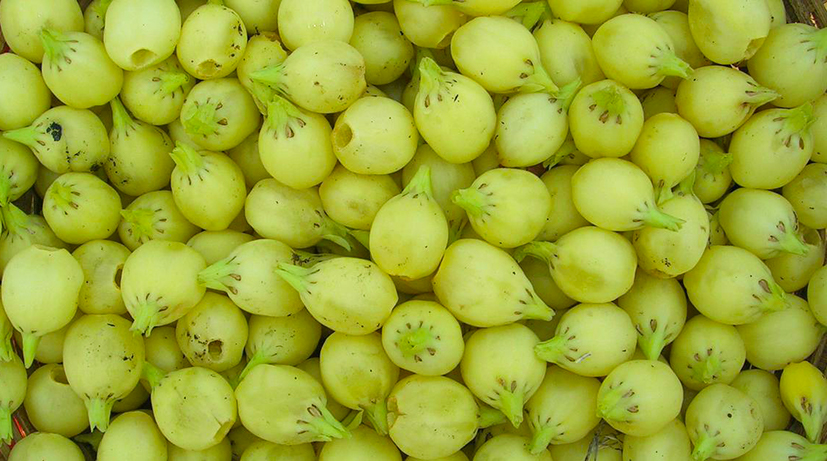MAHUA (Madhuca Longifolia) A Multipurpose Tree Species of India : A Review
ABSTRACT
Mahua (Madhuca longifolia), a vital multipurpose tree species native to India, holds significant ecological, economic, and cultural importance. Widely distributed across tropical and subtropical regions, it thrives in arid and semi-arid zones. Mahua is renowned for its diverse uses, including edible flowers for food and beverages, oil-rich seeds for culinary and industrial purposes, and timber for construction. The tree also serves as a critical source of fodder, benefits include soil conservation, carbon sequestration, and enhancement of biodiversity. Mahua plays a central role in tribal communities, particularly in India, where its products are integral to local economies and traditions. Despite its potential, overexploitation, habitat loss, and climate challenges threaten its sustainability. This review highlights the multifaceted utility of Mahua, emphasizing the need for conservation strategies and sustainable utilization to balance its ecological and economic significance. Keywords: Edible Flowers, Climate Resilience, Rural Economy, Oil extraction, Tribe & Medicinal.
INTRODUCTION:
Mahua (Madhuca longifolia), a tropical tree species native to India, holds immense cultural, ecological, and economic significance. Belonging to the family Sapotaceae, it is widely distributed across central and northern India, particularly in dry and semi-arid regions. Known as the “Tree of Life” in many tribal and rural communities, Mahua is valued for its diverse uses and resilience to harsh climatic conditions The Mahua tree grows to a height of 15-20 meters and is characterized by a dense, spreading canopy, making it an effective shade tree. Its adaptability to various soil types, including marginal and degraded lands, contributes to its importance in afforestation and soil conservation efforts. The tree’s multipurpose utility is primarily attributed to its flowers, seeds, and wood. The fragrant, fleshy flowers are rich in sugar and are traditionally used to prepare local beverages and sweets. Additionally, they serve as a vital source of nutrition and income for tribal communities. Mahua seeds yield a high-quality oil, which is used for cooking, making soaps, and producing biofuel. The residual seed cake is an excellent organic fertilizer. Mahua wood, though not highly durable, finds application in making furniture, construction materials, and fuel. The tree’s bark and leaves are utilized in traditional medicine to treat ailments such as skin diseases, ulcers, and rheumatism. Moreover, Mahua plays a crucial role in supporting biodiversity, providing food and habitat for a range of wildlife species. In the context of sustainable development, Mahua offers a viable solution for rural livelihoods, energy security, and ecological balance. Its cultural and economic relevance underscores the need for conservation and promotion of this remarkable tree species in agroforestry and reforestation programs across India.
AREA AND PRODUCTION:
Mahua is a frost resistant species that can grow in marginal areas of dry tropical and subtropical forests up to an altitude of 1200-1800 m, in India. It requires mean annual temperature of 2-460 C, mean annual rainfall ranging from 550-1500 mm and mean annual humidity from 40-90 percent. Mahua trees are distributed from India to other Asian countries like The Philippines, Pakistan, Sri Lanka to Australia. It can be found scattered in pasture lands in central India, and on river banks in semi-evergreen forests. In India, large quantities of Mahua trees are found in the states of Uttar Pradesh, Madhya Pradesh, Orissa, Jharkhand, Chhattisgarh, Andhra Pradesh, Maharashtra, Bihar, West Bengal, Karnataka, Gujarat, Rajasthan and the evaluated annual production of Mahua flowers is 45000 Million tonnes. The yield of Mahua flowers varies from 80-320 kg for every tree. Madhya Pradesh is the most astounding Mahua developing state with average trade volume of 5,730 metric tonnes and worth about Indian rupees 8.4 million (Behera et al., 2016).
CLIMATE AND SOIL:
Mahua prefers tropical climate. It can withstand drought admirably. This tree does not survive under waterlogged conditions. Since it is a very hardy tree, it can grow even in pockets of soil between crevices of barren rocks. Trees even grow on degraded rocky areas including salt- affected soils. However, for its better growth and productivity, well drained, deep loam soil is ideal.
CULTIVATION AND COLLECTION:
This is a wild tree so at present it is not cultivated intentionally and naturally found in nature, but nowadays there is a strong need to cultivate this plant and make necessary changes in its genetic structure to make it more useful for commercial purpose. The application of scientific knowledge and agriculture tools is much needed to make this plant more disease resistant and more flowering along with the enhancement of chemical constituents. The cultivation of Mahua should be done on either wild land for better availability of constituents and its seeds should be spread in the farming areas for the future collection of flower, unripe, and ripe fruits may become easier. Cultivation is generally done in the month of July to September and generally, flowering takes place in March and April. After this time, the flower converts into fruit which is also useful in both unripe and ripe conditions. Although every part of Mahua plant is useful, flower, fruit, seeds oil, and seed cake are more important (Patel et al., 2019).











